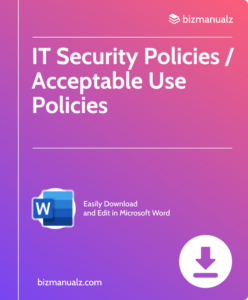CIO IT Operational Efficiency

Unlock the full potential of your business with efficient IT operations. Save time, resources, and costs while staying ahead of the competition. Are you struggling to keep up with the demands of a rapidly evolving digital landscape? Let us show you how to boost your operational efficiency and thrive. CIO IT Operational Efficiency.
What Is CIO IT Operational Efficiency?
CIO IT operational efficiency is the term used to describe the CIO’s ability to effectively utilize IT resources, processes, and investments in order to achieve the highest levels of productivity and performance.
Why Is CIO IT Operational Efficiency Important?
CIO IT operational efficiency is crucial for streamlining processes, reducing costs, and enhancing overall performance. It guarantees that resources are utilized optimally and that IT systems effectively support business objectives. A leading global corporation was able to improve its operational efficiency by implementing automated IT management processes, resulting in a 30% decrease in operational costs and a 50% increase in system uptime.
What Are the Key Factors That Impact CIO IT Operational Efficiency?
As a CIO, one of your key responsibilities is to ensure the efficient and effective operation of your company’s IT department. However, there are many factors that can impact the overall operational efficiency of your IT team.
In this section, we will discuss the key factors that can influence CIO IT operational efficiency, including the IT infrastructure, processes and workflows, staffing and skills, and budget and resources. By understanding these factors, you can improve the performance and productivity of your IT department.
1. IT Infrastructure
- Evaluate the existing IT infrastructure to determine its strengths and weaknesses.
- Recognize areas that require improvement, including network security and hardware upgrades.
- Create a plan and prioritize necessary upgrades based on critical needs and available resources.
- Implement changes in a systematic manner to minimize disruptions to ongoing operations.
Did you know? Upgrading IT infrastructure can result in a 30% decrease in downtime and a 25% increase in productivity.
2. IT Processes and Workflows
- Map Out Processes: Identify and document current IT workflows and processes to gain a better understanding of the existing system.
- Identify Bottlenecks: Pinpoint areas where IT processes slow down or stall, hindering operational efficiency.
- Implement Automation: Introduce automation tools to streamline repetitive tasks and enable staff to focus on more strategic activities.
- Continuous Improvement: Foster a culture of continuous improvement, encouraging staff to suggest and implement enhancements to IT processes.
For example, a company struggling with inefficient IT processes conducted a thorough analysis and implemented automation, resulting in a 30% increase in operational efficiency.
3. IT Staffing and Skills
Improving IT staffing and skills involves:
- Identifying skill gaps and training needs
- Recruiting skilled professionals
- Implementing cross-training programs
- Empowering staff with continuous learning opportunities
A real-life example is how a leading tech company enhanced their IT staffing and skills by identifying skill gaps and providing specialized training, resulting in improved project delivery and increased customer satisfaction.
4. IT Budget and Resources
When it comes to IT budget and resources, CIOs must prioritize strategic investments, allocate funds efficiently, and optimize resource allocation. This includes regularly conducting cost-benefit analyses, utilizing cloud solutions for cost savings, and aligning budget allocation with business objectives.
To achieve this, CIOs can consider implementing a zero-based budgeting approach to ensure thorough resource allocation and periodically assessing the return on investment in order to effectively reallocate resources.
How Can CIOs Improve IT Operational Efficiency?
As technology rapidly evolves and businesses become increasingly reliant on IT, CIOs are faced with the challenge of improving operational efficiency within their departments. In this section, we will discuss practical strategies that can be implemented to achieve this goal.
From automating and streamlining processes to investing in infrastructure upgrades, developing and training staff, and optimizing budgets and resources, CIOs have a range of options to improve the efficiency of their IT operations. Let’s dive into each of these strategies in more detail.
1. Implement Automation and Streamlining Processes
- Assess Current Processes: Identify areas suitable for implementing automation and streamlining.
- Choose Appropriate Tools: Select automation software and tools that align with operational needs.
- Implement Automation: Integrate automation into repetitive tasks, reducing manual workload and streamlining processes.
- Streamline Workflows: Simplify complex processes to enhance efficiency and reduce errors through automation.
- Monitor and Refine: Regularly review and refine automated processes for optimization and improvement.
2. Invest in Upgrading IT Infrastructure
- Conduct a comprehensive assessment of the current IT infrastructure to identify areas for improvement and determine the need for upgrades.
- Research and analyze the latest technologies and trends to determine the most suitable upgrades for the IT infrastructure.
- Create a detailed roadmap for the upgrade process, including timelines and budget allocations.
- Engage with IT experts or consultants to gain insights and recommendations for effective infrastructure enhancements.
Investing in upgrading IT infrastructure is crucial for maintaining a competitive edge and ensuring seamless operational performance. By staying abreast of technological advancements and strategically implementing upgrades, CIOs can elevate overall IT efficiency and drive sustained business growth.
3. Develop and Train IT Staff
- Identify skill gaps and training needs within the IT staff.
- Develop a comprehensive training plan focused on technical skills, soft skills, and industry-specific knowledge to improve and train the IT staff.
- Implement mentorship programs to facilitate knowledge transfer and skill development among the IT staff.
- Utilize e-learning platforms and workshops to provide ongoing training opportunities for the IT staff.
- Evaluate the effectiveness of the training through performance metrics and feedback from the IT staff.
4. Optimize IT Budget and Resources
- Assess current budget allocation and resource utilization.
- Identify areas for cost reduction and resource optimization, including implementing cloud services and virtualization to streamline resource usage.
- Explore the possibility of outsourcing non-core functions to reduce operational costs.
- Did you know? Optimizing IT budget and resources can result in a 20-30% decrease in operational expenses while enhancing overall efficiency.
What Are the Benefits of Improving CIO IT Operational Efficiency?
In today’s fast-paced business world, Chief Information Officers (CIOs) are constantly seeking ways to improve the efficiency of their IT operations. By streamlining processes and optimizing resources, CIOs can achieve significant benefits for their organizations.
In this section, we will discuss the various benefits of improving CIO IT operational efficiency, including cost savings, increased productivity, better IT performance and service delivery, and enhanced customer satisfaction. These advantages not only contribute to the success of the IT department, but also have a positive impact on the overall success of the company.
1. Cost Savings
- Assess Current Expenditure: Analyze current IT spending to identify areas where cost savings can be achieved.
- Implement Cloud Solutions: Utilize cloud services to reduce hardware and maintenance costs.
- Energy Efficiency: Adopt energy-efficient technologies to lower utility expenses.
- Consolidate Resources: Merge systems and applications to eliminate redundancy and reduce licensing and maintenance costs.
2. Increased Productivity
- Streamline processes and implement automation to increase productivity and reduce manual effort.
- Provide relevant training to IT staff to enhance their skills and efficiency, leading to increased productivity.
- Adopt agile methodologies to improve the speed of project delivery and responsiveness to changes, resulting in increased productivity.
- Encourage collaboration and knowledge sharing among IT teams to leverage collective expertise and boost productivity.
3. Better IT Performance and Service Delivery
- Utilize ITIL best practices to standardize service delivery and enhance performance.
- Regularly monitor key performance indicators (KPIs) to identify and improve upon areas of service delivery.
- Invest in robust service management tools to ensure efficient and effective service delivery.
- Provide ongoing training to IT staff to improve skills and proficiency in service delivery.
Pro-tip: Foster collaboration between IT teams and other business units to align IT services with organizational goals, resulting in improved IT performance and service delivery.
4. Enhanced Customer Satisfaction
- Understand customer needs: Gather feedback and conduct surveys to comprehend customer requirements and pain points.
- Improve response time: Streamline processes to ensure faster issue resolution and efficient support.
- Enhance user experience: Invest in user-friendly interfaces and intuitive systems to boost customer satisfaction and ultimately enhance customer satisfaction.
- Provide personalized solutions: Tailor IT services to meet individual customer needs, enhancing their experience and satisfaction.
Frequently Asked Questions

What is CIO IT Operational Efficiency?
CIO IT Operational Efficiency refers to the ability of a Chief Information Officer (CIO) to streamline and optimize the IT operations within an organization to ensure maximum productivity, cost-effectiveness, and overall success.
Why is CIO IT Operational Efficiency important?
CIO IT Operational Efficiency is important because it allows organizations to effectively manage and utilize their IT resources, leading to improved overall performance and cost savings. It also helps CIOs to align IT strategies with business goals and drive innovation.
What are the key components of CIO IT Operational Efficiency?
The key components of CIO IT Operational Efficiency include IT infrastructure, processes, people, and technology. These components work together to ensure that IT operations are running smoothly and efficiently.
How can CIOs improve IT Operational Efficiency?
CIOs can improve IT Operational Efficiency by implementing best practices such as automation, standardization, and optimization of IT processes. They can also utilize data analytics and cloud technologies to optimize IT operations and reduce costs.
What are the benefits of CIO IT Operational Efficiency?
The benefits of CIO IT Operational Efficiency include cost savings, improved productivity, enhanced security, better use of resources, and increased agility. It also leads to better decision-making and improved customer satisfaction.
How can I measure the success of CIO IT Operational Efficiency?
The success of CIO IT Operational Efficiency can be measured through key performance indicators (KPIs) such as IT downtime, response time, cost per transaction, and user satisfaction. Regular assessments and audits can also help track progress and identify areas for improvement.

















Leave a Reply